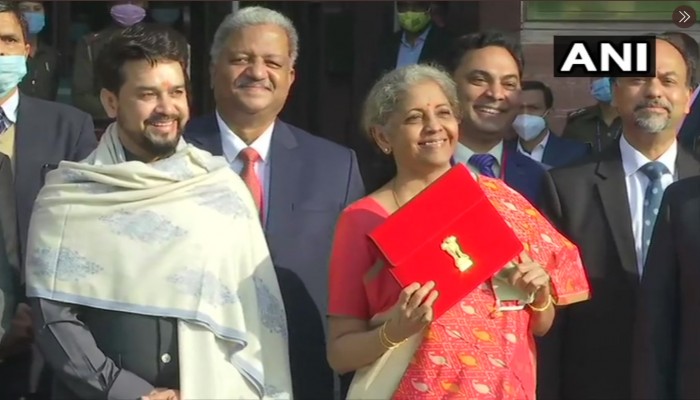Economic Survey 2020-21 and Expectations from the 2021 Union Budget
- In Economics
- 09:47 AM, Feb 01, 2021
- Dhiresh Kulshrestha
COVID-19 has been harmful for economic development of the country. It has highly impacted the agricultural sector, industrial sector, service sector, tourism industry and balance of payments disequilibrium. The farmer’s community across the country were concerned due to COVID-19 outbreak. The Department for Promotion of Industry and Internal Trade has given clear directions to the state government to ensure and allow interstate movement of the goods for the food processing industry in India for recovering from this dire situation.
Lockdown slowed mandi operations, and due to farmers strike daily labourers are unable to reach orchards and workplace. As a result, small and marginal farmers suffered significant losses at the peak time of harvest for main food grain Wheat, Grams, Cotton, seasonal fruits bananas, grapes and for spices crops turmeric, chillies, jeera, veggies, onion and potato. This has affected the quality or yields of the credit assets and investment assets of the group.
Many think tanks indicate a temporary blip in Indian economy for a quarter or two, but it is not true, it will highly damage our base of the economy rural infrastructure and agricultural sector no doubt. This means that even companies that made it through trade wars unscathed might be affected due to lost lower income group employment, daily wages workers and small and marginal farmers or shut down the small and medium enterprises because of COVID-19 outbreak.
RBI and other policy makers with this budget allocation may well take action to try to insulate the Indian economy from those economic hiccups.
GOI needs to focus on raising the consumption level of the market economy and enhance the employment opportunities through robust investment process. It needs to revamp credit flow mechanism, supply side reforms, promote norms to improve the investments in the economy in coming budget-2021.
Author suggests following reforms with coming budget-2021 for economy recovery in India:
- The Economic Survey-2021 expects that Indian economy can have 11% growth rate in financial year 2022. Government needs to push manufacturing industry through its Production Linked Incentives (PLI) scheme.
- Focus on inflation management preferably Consumer Price Index revision through post-harvest management and control over food wastages of perishable items as well as food grains and bring out reforms in inventory management in India.
- Re-imagine farm sectors as modern business model through new farms laws and revamp the farmer’s income especially small and marginal farm holdings.
- Must increase labour workforce participation and improve women’s contribution. LFPR of females in the productive age (15-59 years) was 26.5 per cent in 2018-19, as compared to 80.3 per cent for males (ru-urban).
- Research and Development upturn spend to over 2% of GDP from 0.7% measures to elevate Private investment as innovation based on PPP model
- The rural sector in India countersigned the sensation of reverse migration during the period of complete lockdown, with migrants availing all possible means of transport or even walking back kilometers to reach homes. But the eventual return of these migrants back to metropolitan cities would materialize only with the normalization of COVID-19 related stringencies. Despite such adversities, the resilience of the rural economy in tackling the COVID-19 related crisis has been good and it must be supported through stimulus packages in coming budget.
- COVID-19 has exposed the defencelessness of urban casual workers, who account for 11.2 per cent of urban workforce (All-India) as per PLFS, January-March, 2020, a significant proportion of them are supposed to be migrants who were impacted by the lockdown. About 63.19 lakh migrant workers travelled through Shramik Special trains from May-August 2020. Government of India, needs to make provisions for migrant labours legally with respective state governments.
- Aatmanirbhar Bharat Rojgar Yojana (ABRY): Aatmanirbhar Bharat 3.0 package announced in November, 2020 has total estimated outlay of INR 22,810 crore for the scheme period i.e., up to wage month 31st May, 2023. These funds must efficiently allocated for better labour welfare measures.
For growth in India, author predicts the rollout of vaccines against COVID will re-energise Asia's third-largest economy with 11% growth rate for financial year 2022.







Comments